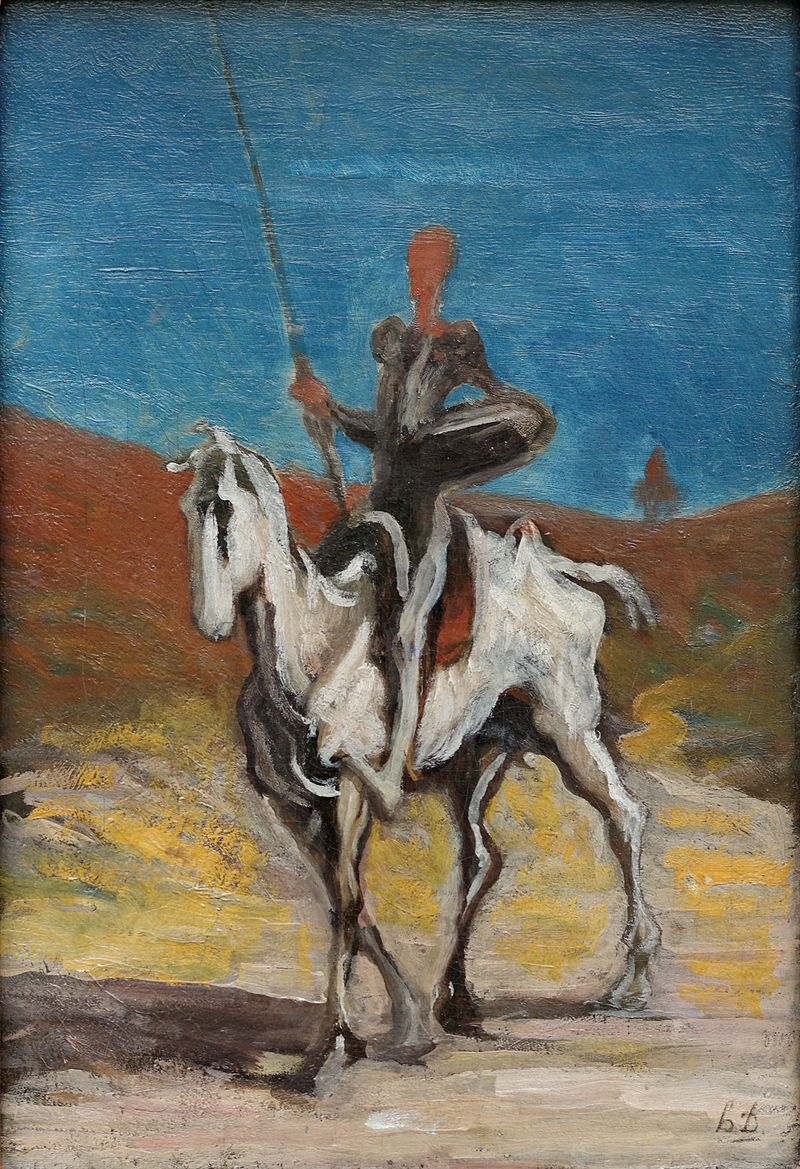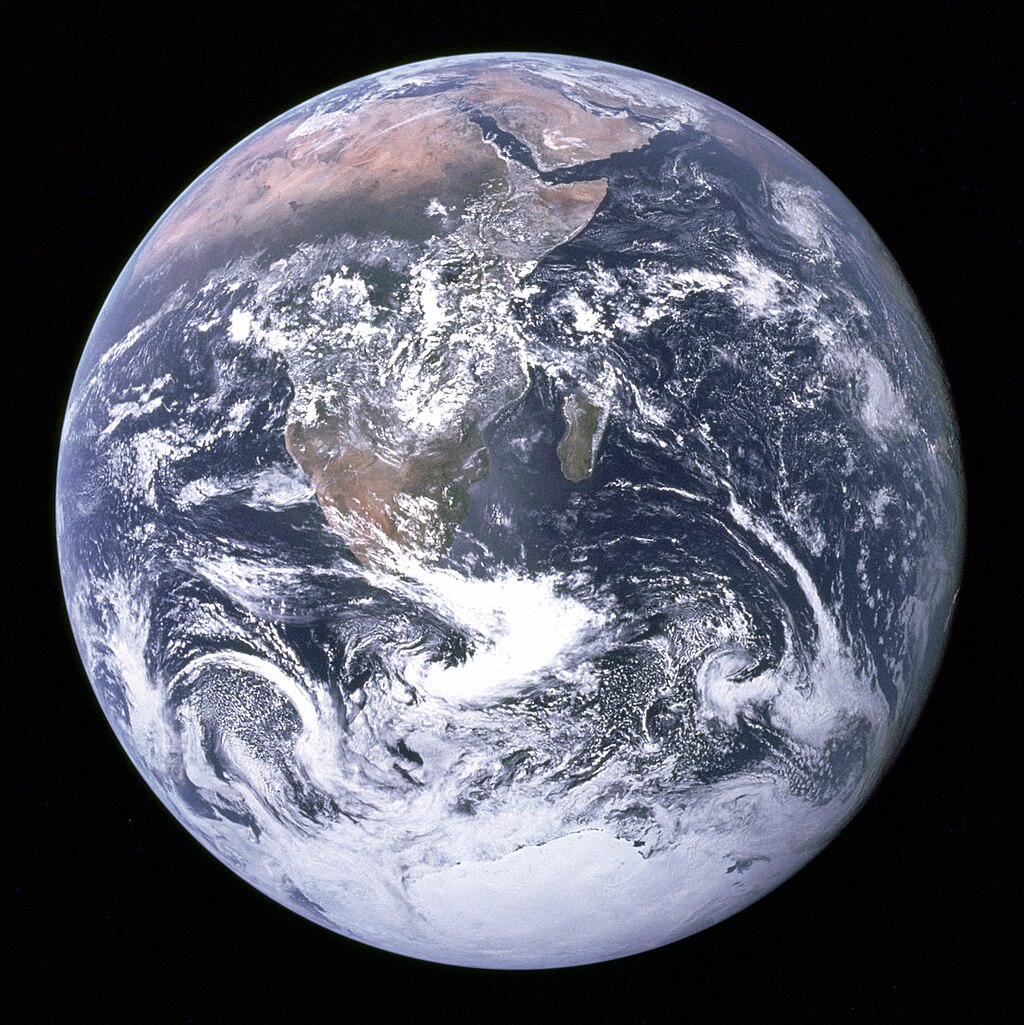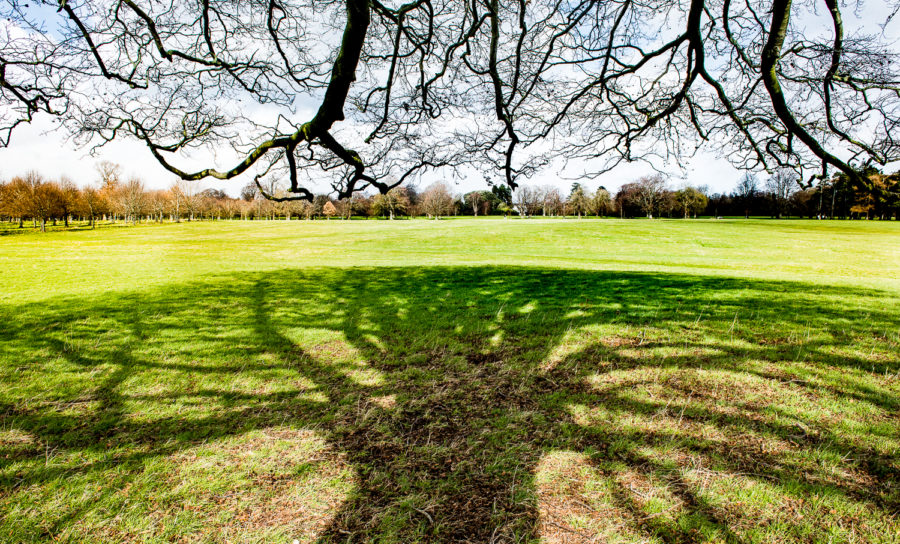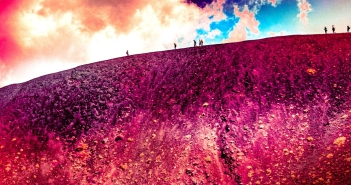It is a notable feature of the prevailing world order that citizens of Western states, in particular, are significantly ill-informed and mis-informed of the past and present contexts of either their disadvantage or their comfort. For centuries the corporate/political/church covenant (imperialism) has sucked the earth of its bounty, dissipated its coherence, shattered communities and brought it to the edge of ruin. It accomplished this through the exploitation, enslavement, dispossession, degradation, starvation and murder of countless millions of fellow human beings.
Upon this base history and its persistence rest our affluence and our inequalities, the persuasive delusions of Western civilization (“our values”), its obtrusive superiority and an unrestrained financial sector that through the extension of rentier/monopoly/surveillance capitalism has all but established a global imperium.
Moreover, this supranational dominance has a forceful ally in its dis-integration of the world in the mis-conceived dogma of scientific materialism that reduces life to matter, minds to brains, whole self-organizing organisms to constituent parts; that effects the enclosure of everything spontaneous, primary, vital, and has generated a bio-tech industry determined to exploit the common process of becoming as if it was just another thing.
During a period of lockdown, I reopened a book on Goya[i] that I hadn’t read for many years. Any study of Goya is likely to reproduce his etching, The Sleep of Reason Produces Monsters. This was intended as the frontispiece of Los Caprichos, a series of 80 etchings published in 1799 that were a cutting satire of Spanish society at the time.
What gave rise, at fifty-eight years of age to the sudden disillusionment of the successful court painter has long been a matter of speculation. A serious illness in 1792 had left him permanently deaf and he was overworked, trapped by too many commissions. Burdened by demands, constrained by compromise and impelled by a maturing self-realization, creativity and assertiveness, his social position was becoming precarious and the conflict was perhaps too much to bear. Thankfully, he still had thirty years ahead of him and these years freed him enough to become the artist so admired today.
The usual reading of this striking work (published as Capricho 43 and replaced on the title page by a self-portrait) is that without reason we are susceptible to the naivety, superstitions and ignorance of our irrational impulses. It is a common theme of Enlightenment thinking, central to its comforting tale of intellectual and cultural progression, and it underpins the white-supremacist ideology of Western imperialism, as we shall see.
And fair enough, the reforms of Charles III notwithstanding, Spain at the time was the Spain that endured for so long – stuck in its ways, morally enervated and restrained by the barbarity of the Spanish Inquisition. That Goya was eventually appalled at the indolence and hypocrisy of Spanish high society and the regressive influence of a hidebound clergy is not surprising.
However, it is also a simplistic narrative which I’ll return to later, but to be clear, no one can be sure exactly what Goya was trying to express when he conceived the image. In any case, the purpose of this essay is not to put Goya on the couch, so to speak, but to explain why I found Capricho 43 such an arresting image at the height of the COVID panic and to pursue the train of thought that it provoked.
It is not the least of the failings of much social and political commentary these days, especially in the mainstream media, that history begins with the latest headline; that, as it has been said, “it is all text and no context”. To this end we need to go back in time.
Almost exactly two hundred years before Goya published Los Caprichos, Don Quixote de la Mancha rode out like an epic hero of old to confront “at least thirty outrageous giants” that ranged before him and his squire, Sancho Panza, on the plain of Montiel. Impelled only by his own will and disregarding his squire’s assurances that they were windmills, Don Quixote spurred on his horse till he came before his foe. Then, “covering himself with his shield and couching his lance,” he charged, plunged it into the unrelenting sail…..and was tossed aside by the great machine.
“Mercy on me, cried Sancho…did I not tell you they were windmills, and that nobody could think otherwise, unless he had also windmills in his head”. To no avail.

Don Quixote by Honoré Daumier (1868).
Tilting at Windmills
And so his adventures proceed. This celebrated episode, though it only takes up a couple of pages near the beginning of a book of approximately 750 pages sets the tone for the rest – by part tragic, comic, ironic.
Deluded clown, romantic idealist, assertive self-hood: all this and more have been read into the character of the famous knight-errant. That Cervantes intended it as, in some sense, a parody of the chivalric tale seems to be so. But, perhaps most importantly, as the diverse interpretations of the work themselves might indicate, it is a compelling portrait of an individual caught between two worlds.
It was written at a time when the long transition from the Middle Ages to the modern world was reaching a conclusion. The trappings of the centralised state: bureaucracy, social control, militarism and an economy favouring capital accumulation – all so familiar to us now – were being established at this time.
The sixteenth century opened with death, destruction and unparalleled savagery in Central and South America. It was accompanied at home by large land enclosures and dispossession. And witch trials, actually an occasional occurrence in the Medieval Period, proliferated throughout Europe.
The seventeenth century continued the pattern with a huge growth of standing armies; the Thirty Years War that decimated Central Europe; genocide in South and Central America repeated in the North; the transatlantic slave trade; and, crucially, the establishment of the world’s first joint-stock company (forerunner of the modern corporation) in Amsterdam.
As Fabian Scheidler argues in his succinct history of our capitalist civilization,[ii] European economies had developed into what was essentially a circular war economy. European states borrowed enormous amounts of money to finance wars at home and exploitation abroad. The riches they acquired were largely used to repay banks, who, in turn, lent more money and so on.
It was a system that made “entrepreneurs”, war-profiteers, and banks extremely rich, but shattered communities and beggared populations at large. The physical power of the state was indispensable to the project, but the state’s role, it is important to note, was not in the first instance to extend its power, but to facilitate capital accumulation by a privileged few.
This, then, was the social environment in which that other pillar of the modern world arose. The development of science is portrayed as the triumph of rationality over irrationality, verifiable knowledge over superstition, and more. But the actual science that developed resulted from an evolving sense of individual autonomy and mathematical clarity and, for reasons to be discussed, it generated an ideology favoured by the forcible socio-economic power structures of the day.
Furthermore, this type of science did not so much replace religion as the ideological basis of society as extend its dualistic thinking to the relationship between humanity and the natural world – from God versus man to man versus nature.
To be clear, the problem is not with science per se, but with the reductionist worldview that underlies it and the vested interests that support it. That we should look at the world without pre-conceived ideas or doctrinal certainties and let it speak for itself is fine. And it would be ridiculous to disavow astonishing discoveries in every field and technological achievements in engineering, medicine and so much more. While the many social advances that would eventually arrive in the wake of modernity can hardly be disregarded – although we in the West are mostly indifferent to the exploitation on which our complacency rests.
And it might be added that the values of justice, freedom and equality which are the hallmarks of a liberal democracy are routinely circumscribed by class. Laws may be inscribed, but bias is ingrained.
This is not intended to establish some imagined pre-modern, universal state of nature, but the mutual emergence in this period of a strict rationality in both science and a system of market economics, whereby the intrinsic, or use-value, of material necessity and nourishment is subordinated to its exchange-value in the capitalist marketplace, was problematic from the outset.
Since the introduction of double-entry bookkeeping in the fourteenth century, income and expenditure could be formulated mathematically and profit or loss calculated accurately. Increasingly, the focus of trade became profit: to repay lenders if finance had been required and to accumulate money.
Ted Dace has described the outcome of this process clearly: ‘As the basis of economics becomes the trade itself and not the tangible thing exchanged, money is transformed into an all-consuming monster. No longer bound up with the limitations of actual land, people and resources, it springs to life, an abstraction with a will of its own.’[iii]
By now it is our most pressing need and its acquisition has become an urgent necessity for the many, superfluous wealth for the few; it delineates the structural hierarchy of class and serves as a measure of human worth generally. But, as Ted Dace cautions, ‘sooner or later abstraction runs up against reality.’
Meanwhile, the real economy of everyday life has been all but consumed by the predation of finance capitalism and corporate monopoly. And the basic needs of a sustainable life for so many people have become subservient to a parasitic imperative of making money out of money, out of you.

Nicolaus Copernicus.
Like Clockwork
When Copernicus turned cosmology on its head in 1543 he began a process, unimaginable then, that would in time overwhelm God himself. The mathematical precision that astronomy seemed to reveal encouraged the idea that all physical interactions on earth could be so understood.
Thus, Johannes Kepler wrote in 1605: “My aim is to show that the celestial machine is to be likened not to a divine organism but rather to clockwork ….. Moreover, I show how this physical conception is to be presented through calculation and geometry”.
A few years later Galileo was unequivocal: “When God produces the world, he produces a thoroughly mathematical structure that obeys the laws of number, geometrical figure and quantitative function, Nature is an embodied mathematical system.” And even more emphatically: “Reality is that which can be described mathematically. Everything else is illusion.”
In the Medieval period and, as a general rule, most human cultures that ever existed or survived outside the modern age, the world as a whole was organic and alive, to a greater or lesser extent indivisible, and sustained by an animating principle – God, Spirit, Soul, or the many poetic metaphors of world mythology.
This philosophia perennis, so-called, is an expression of experience rather than ideas. It is a philosophy, or understanding, of our inner nature and the common experience of being. And, perhaps for this reason, the archetypal symbols generated by it are recognizably similar across many outwardly diverse cultures.
And considering that the deep reality of being is beyond intellectual grasp, scriptural certainty, and social constraint, it relies on mythopoetic metaphor and the affective power of ritual to express what is essentially ineffable, and to relate it to the cycle of daily life.

Portrait of Giordano Bruno.
Giordano Bruno
The introduction of the heliocentric model by Copernicus, and its determination by others, so stormed the citadel of belief the full weight of The Inquisition bore down on Galileo – who wavered. The recalcitrant Giordano Bruno supported Copernicus, but his philosophy cut much deeper.
Bruno and others before him had regard for these words from a twelfth century hermetic text, The Book of the Twenty-four Philosophers, “God is a circle whose centre is everywhere and circumference nowhere”. But if the very idea of centre has no meaning, as this suggests, then the fixed framework, a sort of cosmic theatre of space and time in which the universal process unfolds – and on which a mechanistic science depends – means nothing either. With it goes anything fundamental and we are left, it would seem, with no ultimate principle or recourse.
Yet Bruno’s view of the universe was far more profound than anything Galileo could ever have observed through his telescope. All Galileo could see was the inflexible authority of a mathematical system – that must definitively exclude the possibility of an evolving cosmos. And vindication would arrive three hundred years later when Einstein established relativity as a scientific principle.
Nonetheless, we are all here, alive, and conscious of our continuing existence. Being is absolute; our presence is substantial. For all the relativity of physics – and quantum uncertainty – the daylight world of consciousness is whole, it is now, it endures. Life is immanent, some process is generating it, and experience is real.
This, of course, is a great mystery that wells like a spring within each of us and the world in which we live. At the same time, it is beyond us, beyond apprehension and the linear logic of language. The mystery is us; for which reason we cannot know it objectively.
Bruno had much else to say about doctrinal matters, the function of a church and its undesirable interference in philosophical or scientific inquiry. Refusing to recant and pursued around Europe, he was eventually cornered in Venice and spent eight years in the dungeons of the Inquisition in Rome. Still obdurate, condemned and consigned to a foretaste of the flames of hell, he spoke these telling words: “You pronounce sentence upon me perhaps with a greater fear than that with which I receive it.”
In this tumultuous period, the authority of Catholic dogma was losing its grip as science and philosophy advanced, and no amount of bible thumping could secure it. An existent mythology or set of beliefs cannot prevail when there is no consent to meaning. In fact, no established canon can remain consistent with the evolution of experience and understanding. Although the dead weight of its persistence can overwhelm the embodiment of a new sensibility at the heart of an emergent culture.
Bruno’s pointed accusation largely explains the deranged reaction to his ideas and the science of Galileo and others. The suppressive resolve of the Inquisition was frantic and irrational, but the leading lights of the Reformation clung even more tightly to the Bible. Martin Luther let go of it occasionally to fling his ink pot at the devil but was otherwise unrestrained in his invective against Copernicus and his followers.
Bruno, for all his profanities, still had God on his side, so to speak, but it couldn’t save him from the intense conviction of The Holy Office of the Inquisition. Neither science, philosophy, nor the evidence of the senses could be permitted to challenge the insistent truths of Holy Scripture and that was final. The authenticity of individual experience was no match for the infallible authority of “revelation”, and another way is intolerable when conduct is prescribed on tablets of stone. Such is the power of The Word as all good book-thumpers, from St. Paul to Chairman Mao, to neo-liberal economists know well.
But mere obedience to a precept could never be said to awaken the soul to the redemptive power of a mythic or religious tradition. To interpret its symbolism as literal and historic is to profoundly misunderstand its character as an evocation of our inner nature and the mystery of becoming; and to miss entirely the deeper meaning it holds within its poetic folds for the cosmological, sociological, and psychological orders of existence.
Biblical literalism and Pauline universalism are the solid ground of our presumptive superiority and missionary impulse. For centuries they have been both pretext and apologia for white-supremacist imperialism. Unparalleled in its destructive violence throughout the long history of humankind; and all the more menacing because the espousing nations have managed to persuade the greater part of their populations that its cruelty and its condescension are the precise opposite of this reality. We are really impelled by the best of intentions.
The only thing to add to this continuing horror story is that, as Fabian Scheidler has emphasised, the missionary zeal of a church, now in decline, has been assumed by the high- priests of globalist organizations such as the WTO, the IMF, and the World Bank. And an amoral cabal of investment banks, hedge-funds, corporate raiders, property speculators and sovereign bondholders (to list only the most obvious) feasting on unearned income from monopoly rights, speculative gains, political favour, and predatory credit.
Furthermore, since 2008 it has been clearer than ever that those who command capital control the world; that the present system secures the concentration of wealth into fewer and fewer hands; and that its beneficiaries have forgotten, if they ever knew, the theme of countless tales and fables the world over – that to have everything is to have nothing.

The interior of Kaiser Steel mill in Fontana, California.
The Metaphor of the Machine
Science, as we know it today, developed in a world in which capitalism was well established, accustomed to quantification and already defined to some extent, therefore, by mathematics and the ‘laws’ of the capitalist marketplace. In other words, a strictly rational tone was already sounding when Kepler and Galileo began their inquiries.
Under the sway of mathematics everything becomes a number. The world is what can be measured, and measurement defines reality. The moral power and mechanistic bias of science would confirm the imperialist/capitalist dream. Everything, including all that lives and all that sustains life, could be abstracted, quantified, and assigned an exchange value. Whether a bushel of grain, a slave in the fields, or a cog in an industrial machine, all were just so many commodities to be used, abused, bought, and sold.
Just as our privileged position at the centre of the universe was being usurped by the Copernican revolution and Bruno’s relativism, the organic worldview of tradition was being steamrolled by the metaphor of the machine.
But if Kepler and Galileo saw an image of the machine and the unerring mathematics of clockwork in the orbits of celestial bodies and in physical processes on earth, Descartes, Hobbes, Newton, and others later extended the metaphor to include living organisms. And the science that developed from this radical epistemological shift would shape both society and human consciousness and establish a scientific orthodoxy that has survived to the present day.
That authoritarian states and capitalist elites with imperial interests and ambitions would welcome these reductionist assertions and favour the scientific consensus that advanced them is no surprise. Class warfare at home and genocide abroad are less troubling with convictions like these. A machine, after all, is determinable, controllable, and dispensable.
It should be said that these early mechanists were still devout. But the world was no longer alive. It was now thought of as inanimate matter, designed by God but governed by fixed mathematical principles. In a sense, then, the scientist was extending God’s work on earth, and in such a way the quasi-religious status of science began to emerge.
For Francis Bacon (1561-1626), in whom the notion of a scientific priesthood was first conceived, the development of Western civilization would be a scientific and engineering project defined by his slogan, “knowledge is power”.
God would be a bystander, but we were doing his work. With God on our side and the power of science the world would lay itself open and there would be nothing we couldn’t know or conquer – a presumption of omniscience that still prevails in the scientific community.
It should also be said that dissenting voices were raised. Not all scientists were prepared to degrade life to this extent. But the church itself had mastered its alarm and ceded worldly matters to the domain of science, while it would continue to look after our souls and prepare us all for Paradise.
That art, science and philosophy were now free to pursue their own interests without having to look over their shoulder at the stern face of one of God’s representatives on earth, or his legion of scriptural zealots, is one of the boons of modernity, unquestionably. That these three branches would in time diverge and simply feed off themselves would become a significant problem. But, meantime, a modus vivendi had become established; and that such an arrangement would be uncontentious is largely due to a shared dualism.
Religion and science were agreed: the spiritual and material realms were separate and distinct – God above, humanity and the world below.
Up to this point, three orders of existence were recognized: body, soul, and spirit. Our bodies were connected to the spiritual realm through our souls – the ‘rational soul’ of man, in Christian theology and the equivalent, to all intents and purposes, of the human mind, which was, as yet, regarded as immaterial.
Mechanistic science may have removed soul from nature but, since human beings (well, cultivated minds at any rate) considered themselves a cut above brute existence they were still thought to have souls (or minds, or free-will) through which they interacted with God and put themselves in line for eternal life. But all the rest, the whole ecology of living, was mechanical, purposeless, and determined. And our disconnection from nature and more holistic modes of understanding sank into the culture with ruinous consequences.
As dispiriting as this might seem, we could still rely on our God as ideological support, dispeller of doubt and final consolation. But his days were numbered. The convenient accord with the church was never going to survive the rapid progress of science and the no doubt exhilarating sensation that “knowledge is power”. Every advance would endorse the swelling authority of science and install reliable principles such as Newton’s deterministic laws of motion.
This burgeoning faith in science, reason and human progress is what we know today as The Enlightenment. Edge God aside and it is the prototype of contemporary secular humanism.

“The Blue Marble” is a photograph of the Earth taken on December 7, 1972, by the crew of the Apollo 17.
From ‘Believe in God’ to ‘Trust the Science’
A machine requires a maker and God made the world we were taught. But the more science discovered about the world-machine the more it became clear that, once set in motion, further divine intervention was unnecessary. Towards the end of the eighteenth century, it was also evident that there was no scientific rationale for God either. Fifty years later conspicuous atheism would provoke no censure and materialism was a firmly established tenet of scientific endeavour.
In the orthodox view the universe is composed entirely of matter. The energy that activates it is also material, or physical. It operates according to fixed laws that can be observed, measured, and formulated – and it is fully determined by them. Like a machine it is a hierarchy of parts right down to the “ultimate building-blocks” of sub-atomic particles and chemical molecules. Even biology is reducible in this way, and in the end, there need be nothing we cannot know.
Of course, if these are a priori assumptions then complete knowledge is indeed possible – it’s a foregone conclusion. That actual science has long since swept many of these assumptions aside has not radically removed them from the core belief system of scientific dogma and, crucially, from its day-to-day application.
As a firmly entrenched belief it has replaced religion as the authoritative voice in contemporary society. The peremptory watchword “believe in God” has been superseded by “trust the science”. Its dogmatic purpose is no different and it was used to effect during the pandemic as a marketing slogan for social compliance and pharmaceutical profit.
In any case, the injunction to “trust the science” simply points up the conventional morass into which scientific orthodoxy has sunk. Science is supposed to be about open inquiry, not a defence of “the science” as if certain matters were resolved beyond question just like old-style religion.
Science prides itself on its empiricism and its positivism. Fair enough; it has undoubtedly been an effective strategy and the basis of unprecedented technological development, but all experience must now defer to the “scientific method”.
The objective world of facts: length, height, weight, motion, capacity, etc., from the stars to sub-atomic particles, is the real world. A world objectively apparent, but devoid of meaning, purpose, or self-existence. Moreover, it disallows subjective experience (reality for most of us) and diminishes your creative presence to the point of disappearance.
Excluded from the terms of the world-machine are those elusive qualities of existence that make us feel alive. Whole organisms are more than the sum of their parts and it is this ‘more’ that is forever beyond the materialist’s scope.
Science can tell you all about life, but it cannot tell you what life is. It can describe the surface of things, but not their substance. The scientist may well stand to one side (in a confusion of subject and object) and probe every inch of you, but life will not be pinned.
Scientists can’t seem to start with a whole organism in its environment and develop a methodology to understand it in these terms as a living phenomenon, in a way that does not involve objectification and dissection – even though it is instantaneously apparent to direct experience.
And one viewpoint need not necessarily delegitimize the other. One could accept both as two sides of a coin, but science insists on its “truth” as superior.

Thomas Jones, The Bard, 1774.
Romanticism
The idea that science alone could define our world was challenged with great energy by the Romantic movement in the late eighteenth and early nineteenth century. It left its mark but was no match for the brutal industrialism and economic liberalism of the Victorian era, that explicated Bacon’s rationale.
That said, it would be some time before some scientists would dare to insist that manifest qualities of human nature are illusory; that even the sense of our own being is delusional; that nihilism would be celebrated in literature and philosophy and disintegration of form become the measure of art. And it will perhaps be a little more time before ‘intelligence’ is boxed and the scientifically emancipated individual of the Enlightenment will be, finally, almost fully dehumanized.
But hands up how many of you feel like a machine (as opposed to perhaps being treated like one!). The very idea is clearly nonsensical. In short, a machine is lifeless so how on earth did it ever come be identified with life. It’s hard to imagine even the most ardent materialists can really regard themselves as glorified machines and the world as clockwork, but their science is conducted as if universal existence is material, mechanical, mathematically determined and nothing else.
For Descartes, humanity was uniquely raised above this perfunctory level by the human mind, or soul, which is immaterial and part of our ‘higher’ or spiritual nature. Today’s materialist can invoke no such redemption since the mind has been reduced to the brain – which marvellous (and perplexing) organ has itself been reduced to a personified data processor and control centre.
And while on the face of it, religious creationists and scientific materialists seem at opposite extremes, they in fact make common cause, both in their determinism and their appeal to either an external deity or some deus ex machina such as genetic programs, or ‘laws’ of nature.
Set against both the religious duality of God and humanity, spirit and matter, and the reductive objectivity of scientific analysis and its duality of subject and object (a make-believe world constructed from without) is the immediacy of feeling. The world before our eyes, present to the senses; the sublime plenitude of life, its constancy, its astonishing detail, process within process; a universal accord that could only have evolved as an integrated whole.
There can be moments in life when we forget ourselves, captured by the intensity of experience. Moments of rapture or clarity, free of distraction or intent, that feel complete, and doubt and endeavour dissolve in the pure sensation of being alive. Typically, these moments are fleeting, not a state of permanent bliss. Nor should they be. The everyday is normal; there is a living to be progressed. But they reveal an immediate reality beyond cold hard facts.
The philosopher Alan Watts once joked that in sober society, it seemed, normality was the world seen on a wet Monday morning. The daylight world of consciousness is inescapably the plane on which our daily lives unfold. But science has extended its scepticism to the ‘childhood’ of our religious beliefs to anything beyond its scope. God is not a testable hypothesis, but neither is the very real sensation I’ve just described.

Image Daniel Idini (c)
A World of Things
Science is decisive: the limits of its application define our worldview and determine its commonplace expression. But it generates a world of things, a world without context or meaning. As a consequence, we now live in a forest of facts and can’t see the wood for the trees.
This objective world of facts and things seems real and obvious, which it is, and most of us aren’t bothered by post-modernist allegations that it’s all just interpretation. But at a deeper level there is no such thing as a thing. Which is simply to say that no-thing can exist as an isolated entity apart from other things.
A tree, for instance, seems unequivocally present and specific, but it can only arise and endure as a system of transpiration, photosynthesis and more, supported by an underground universe of micro-organisms. In other words, a tree is more properly thought of as a process. A process, what’s more, that is inextricably interdependent with our own continuing existence through the interchange of carbon dioxide and oxygen.
It follows that every other thing (and this includes us) is also a process that can only exist within the greater process of life as a whole. It is this essential truth of being, not sentiment or scientific necessity that commits us to earth, water, fire, and air. We are nature. Consequently, any de-spoilation of the world or nullification of others is an offence against our selves.
But the language of science is definitive. It supports a methodology that sets the world apart and fails to see that the objective distinction of things is by convention only: that the everyday world of material culture is real at that level, but that a deeper unity underlies it.
The stupendous diversity, adaptivity and integrity of our world – our being – evolved without direction or external law. That is to say, “laws of nature” are implicit. What makes life consistent is that, as it appears in the moment and evolves over time, it establishes patterns. And what makes a pattern a pattern is that it repeats (becomes a “law”). More than anything else living organisms are habitual. As they reproduce and grow and reproduce and grow, they follow well-worn paths. And old habits die hard. Apples can’t be oranges. The young cuckoo abandoned in its egg flies south in autumn.
Habitual behaviour is unconscious. A couple of cells grow into ten trillion. That’s ‘easily’ explained. A ‘genetic program’ underlies it biologists assure us; even though they can barely define a gene and the complexity of cellular development is impossible to fully describe. But a living organism has been formed: one that for the duration of its life is present, constant, adaptive, and purposeful. Try explaining that.
How genes alone could have the determining power of organic development is a modern mystery. How can genes, chemical molecules in the nucleus of a cell, be purposive while the whole organism is mere machine and fully determined? The soul, Rupert Sheldrake suggests, has been resurrected in the genome.[iv]
The expectations of The Human Genome Project have not been realized; in fact, many were confounded. Sure enough, DNA keeps yourself to yourself so to speak, but suddenly everything was ‘genetic’. The cause of all disease and even aberrant human behaviour, not to mention your very appearance (good, bad, or indifferent) was hidden in those helical strands.
We were to finally uncover “the secret of life”. Just as in physics, the atom, and then sub-atomic particles (hundreds now and counting – if they hang around long enough) were thought to constitute the ultimate building blocks of matter, so human biology could be reduced to the molecular level. Our lives are just a matter of physics and chemistry.
What was actually discovered was incalculable complexity, so intricate it resists scientific analysis. Mechanical explanations fall far short. Whole organisms can never be explained in terms of their parts (if you could even isolate parts in this case). And yet an industry has been capitalized as if, and has stepped, like a bull in a china shop, into a dynamic, balanced process common to all life with who knows what consequences.
Furthermore, that such prodigious expansion of interconnected and interdependent life since ‘day one’ could be solely due to the random mutation of genes favoured by natural selection; that integrity in the whole could be produced and sustained by chance in the particular (as is current mechanistic orthodoxy), is a stroke of luck so far beyond calculation as to make the proposition meaningless.
It is also at odds with Darwin himself, in whose view it is the organism that adapts to environmental pressure, and those adaptions are then inherited by its progeny.
The inheritance of acquired characteristics is not easily understood, certainly. But there is no evidence it is genetic. Since genes only exist as integral parts of a whole organism, it is only within a machine theory of life they could be said to determine organic formation or carry that ‘information’ from one generation to the next.
In other words, evolution is a creative process, not a blind mechanism; a sensual interplay of organism and environment, in a world, not determined but open, and committed to its fulfilment – whatever that might be – only as the seed is committed to flower.
Feature Image: The Sleep of Reason Produces Monsters, Francisco Goya, c.1799, Etching, aquatint, drypoint and burin, Collection of the Nelson-Atkins Museum of Art.
[i] Gwyn A. Williams, Goya and the Impossible Revolution, Penguin Books, England,1976.
[ii] Fabian Scheidler. The End of the Megamachine, Zero Books, England, 2020.
[iii] Ted Dace, Escape from Quantopia, Collective Insanity in Science and Society, Iff Books. UK and USA 2014. p.208.
[iv] Rupert Sheldrake. The Science Delusion, Coronet, England, 2013.




